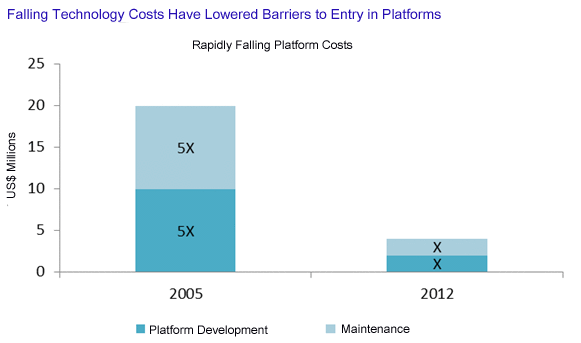Institutional FX Market: Changing Business Models and Evolving Market Structure
Abstract
The institutional foreign exchange market is undergoing a fundamental shift. With the economic crisis changing trade and currency transaction patterns, foreign exchange volume growth is slowing down for the first time in the last six years. After the phenomenal growth of the last decade, which transformed FX into a heavily electronic market, the industry is now entering a new phase.
In the report Institutional FX Market: Changing Business Models and Evolving Market Structure, Celent looks at the motivation for the launch of new FX platforms and analyzes how the barriers to entry for building a platform have fallen in the recent past, enabling more competition in the market. Barriers to entry and barriers to success in the market are two different things, and Celent analyzes how new platforms will survive in this changing market and how incumbents are addressing increased competition.
Regulations are driving the clearing of FX derivatives as Dodd-Frank regulation enforces the move to swap execution facilities (SEFs) for some FX instruments. Similarly in Europe, the move towards organized trade facilities (OTFs) is under way. This will change FX workflow and the market architecture forever. Vendors and banks are gearing up to accommodate these changes.

“The cost of platform development and maintenance has declined 80% in the last seven years, and continues to fall,” says Sreekrishna Sankar, Analyst with Celent and author of the report. “With the development of web technology, cloud services for hardware and infrastructure, and vendors specializing in dealer platform capabilities, smaller banks as well as independent players have found fewer entrance barriers. However, profitability and the ability to succeed are a completely different proposition.”
This report focuses on the evolution of both business models and technology offerings in the market in the context of regulatory overhaul and slowing growth volumes. The report also explores the impact of volumes on platforms and examines how this affects competition among platforms. Driven by trends in cross-asset trading and growth of high frequency trading, the execution patterns of various market participants have changed. The report also provides an analysis of the single dealer and multidealer platforms and looks at trends in various FX instruments, including spot, forwards, swaps, and options.
This 36-page report contains 22 figures and four tables.

